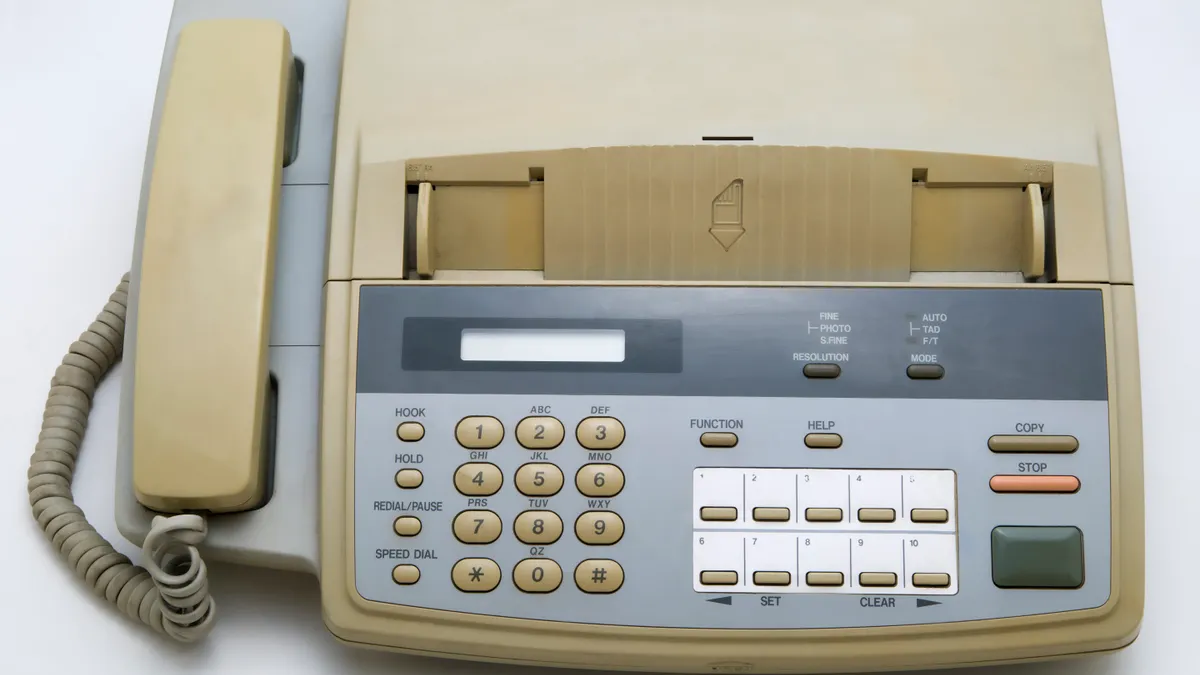Editor's note: This article has been updated to include additional comment from Brother International Corporation.
U.K. regulatory agency Offcom put the fax machine on notice Tuesday, announcing it would recommend eliminating the once ubiquitous feature of office life from its list of required technologies.
If approved, the measure will allow British telecoms to remove faxing from the services they support.
Like the Selectric typewriter before it and the floppy disk that came after, the facsimile machine, which entered the business IT arsenal as the Magnafax Telecopier in the mid-1960s, was a wonder of modern technology — an efficiency gainer, cost saver and must-have innovation.
Fast forward five decades and certainly there are faster, more secure and accessible instantaneous document transmission protocols right at the fingertips of every office worker.
And yet, as IT professionals wearily concede, there’s still a chance you’ll find a fax machine down by the printer, hiding in the copier machine or hanging out somewhere over by the office watercooler.
“In the eyes of IT professionals, fax machines are just ancient, ancient technology, and there are so many better alternatives now,” said Peter Tsai, senior technology analyst at Spiceworks Ziff Davis.
Next to the office printer, with its penchant for paper jams, the fax machine is the workplace artifact IT pros would most like to relegate to the dustbin of enterprise history, Tsai said.
The persistence of faxing was documented in a 2018 SWZD survey of nearly 1,400 IT pros. Two-thirds of respondents said their companies still used fax machines.
“We are continuing to see that strong interest remains in the Healthcare vertical for the fax function,” said in an email Shelly Radler, senior manager of product marketing at Brother International Corporation, a manufacturer of fax machines.
Durability is a key driver of fax machine reliance. Over 30% of companies reported keeping fax machines in service for 10-plus years, according to the survey, and 85% used them for five or more years.
In an informal poll Tsai circulated in the Spiceworks community this week, 42% of 200 respondents said they currently use physical fax devices, and an additional 22% work in an office that subscribes to an electronic fax service.
“Interest in the standalone fax machine continues, but we have started to see a shift to all-in-ones in recent years,” said Radler. “Additionally, we are starting to see growing interest in scan to fax servers,”
The main offenders, said Tsai, are legal, medical and dental practices, government agencies, the insurance industry and, of course, the healthcare sector. As one respondent posted in the comments section, “Yes to physical device and yes to having our own fax server. Yes, we are healthcare.”
Derision for the fax machine arises out of more than just its lowly status as an analog technology in a digital world. For IT pros managing the constant flow of operating system updates, attending to a machine that requires a landline is more than just an inconvenience.
“It’s a pain point and it’s just frustrating because of the nature of the technology,” Tsai said.
While the U.K. is just a step away from handing the fax machine a proverbial gold watch, the landlines continue to hum here in the U.S., where the Department of Health & Human Services still recommends faxing a HIPAA-compliant mode for transmitting lab results, medical records and healthcare instructions in nursing homes.
“As long as there are no laws banning the use of fax machines, they're probably never going to go away,” said Tsai. “They're simple to use, they just work. People who aren’t tech savvy know how to use them. So, as long as nothing’s forcing them to go away, they’ll just stick around and be a thorn in the side of IT professionals everywhere.”












